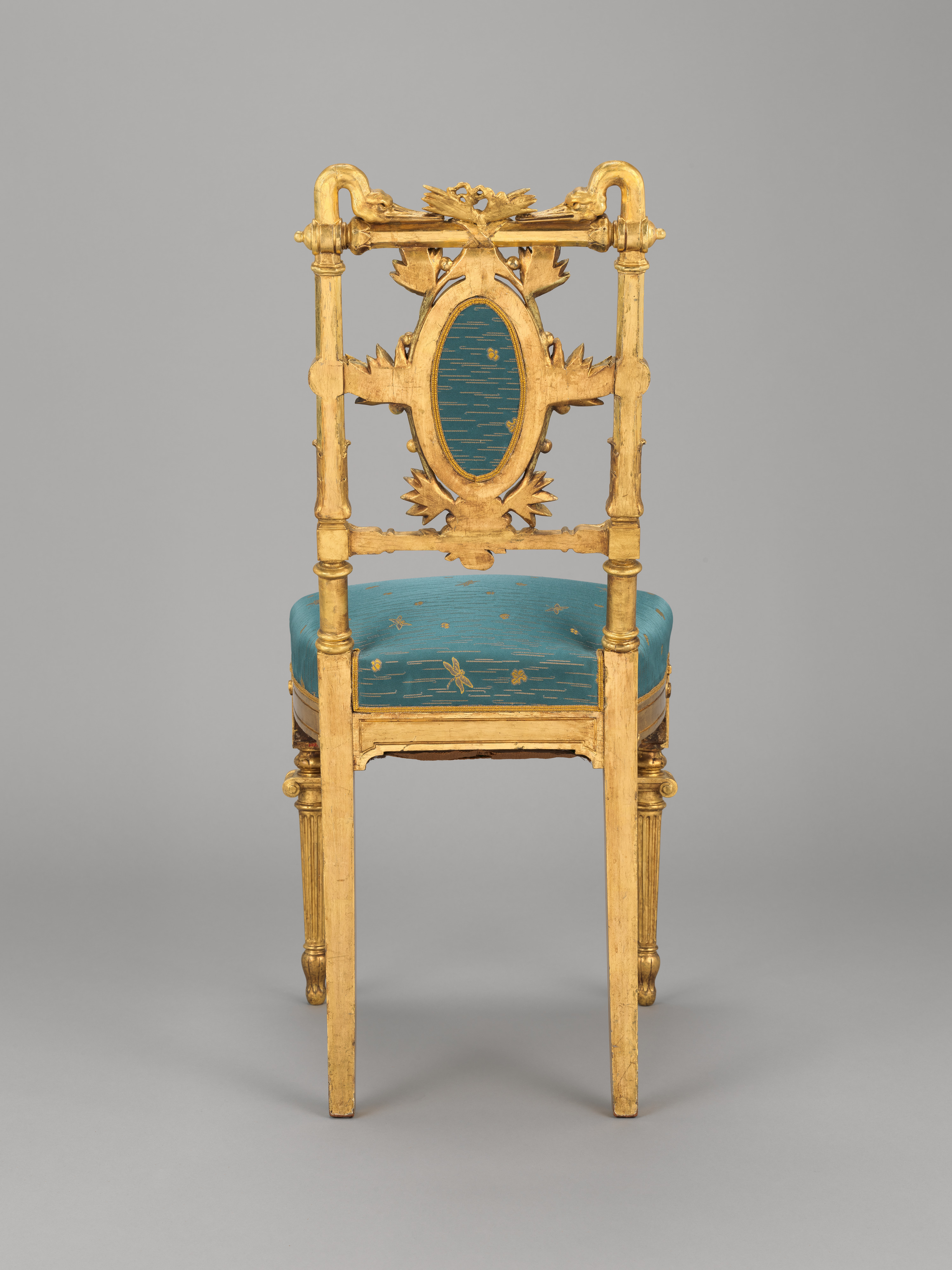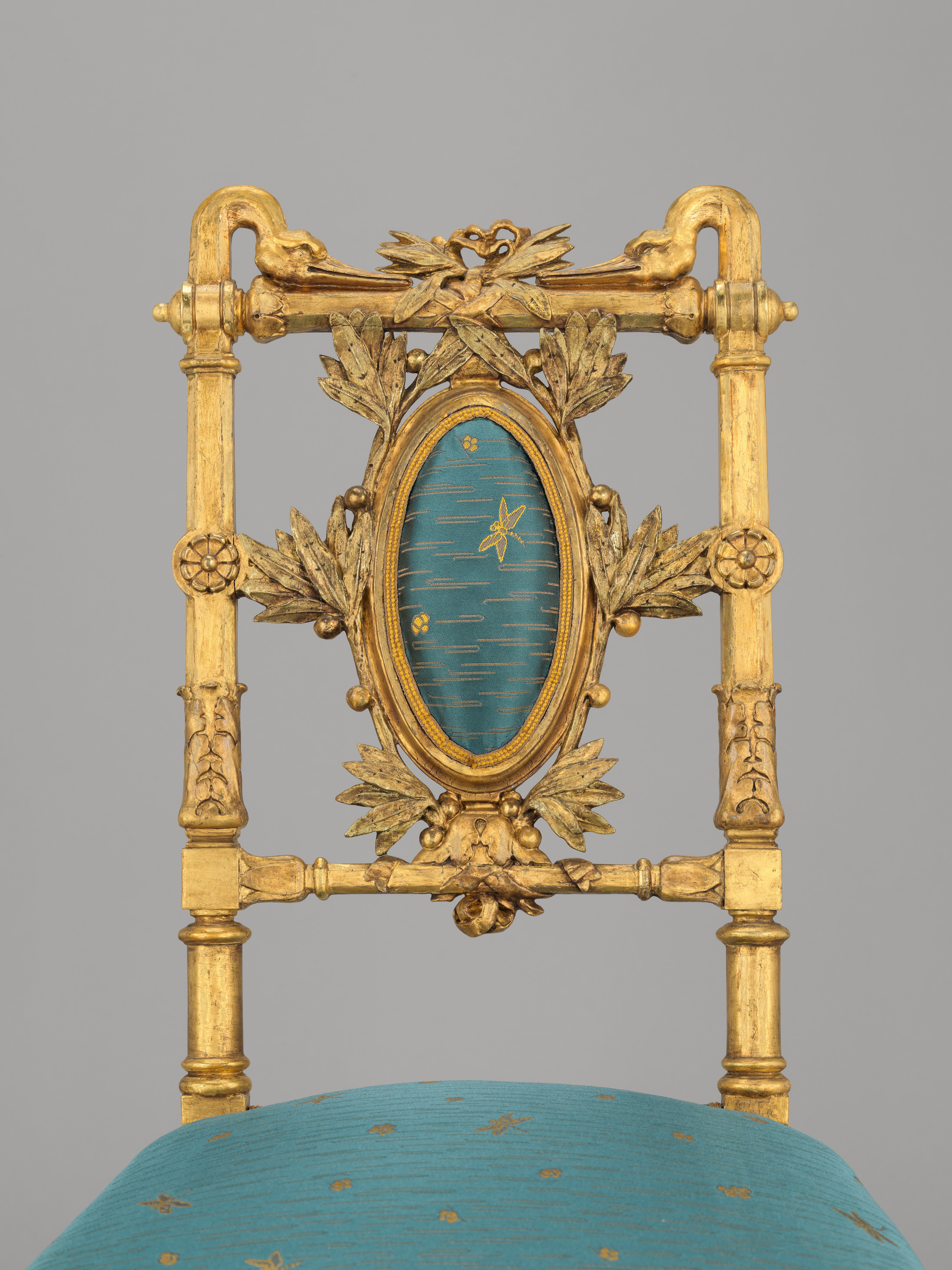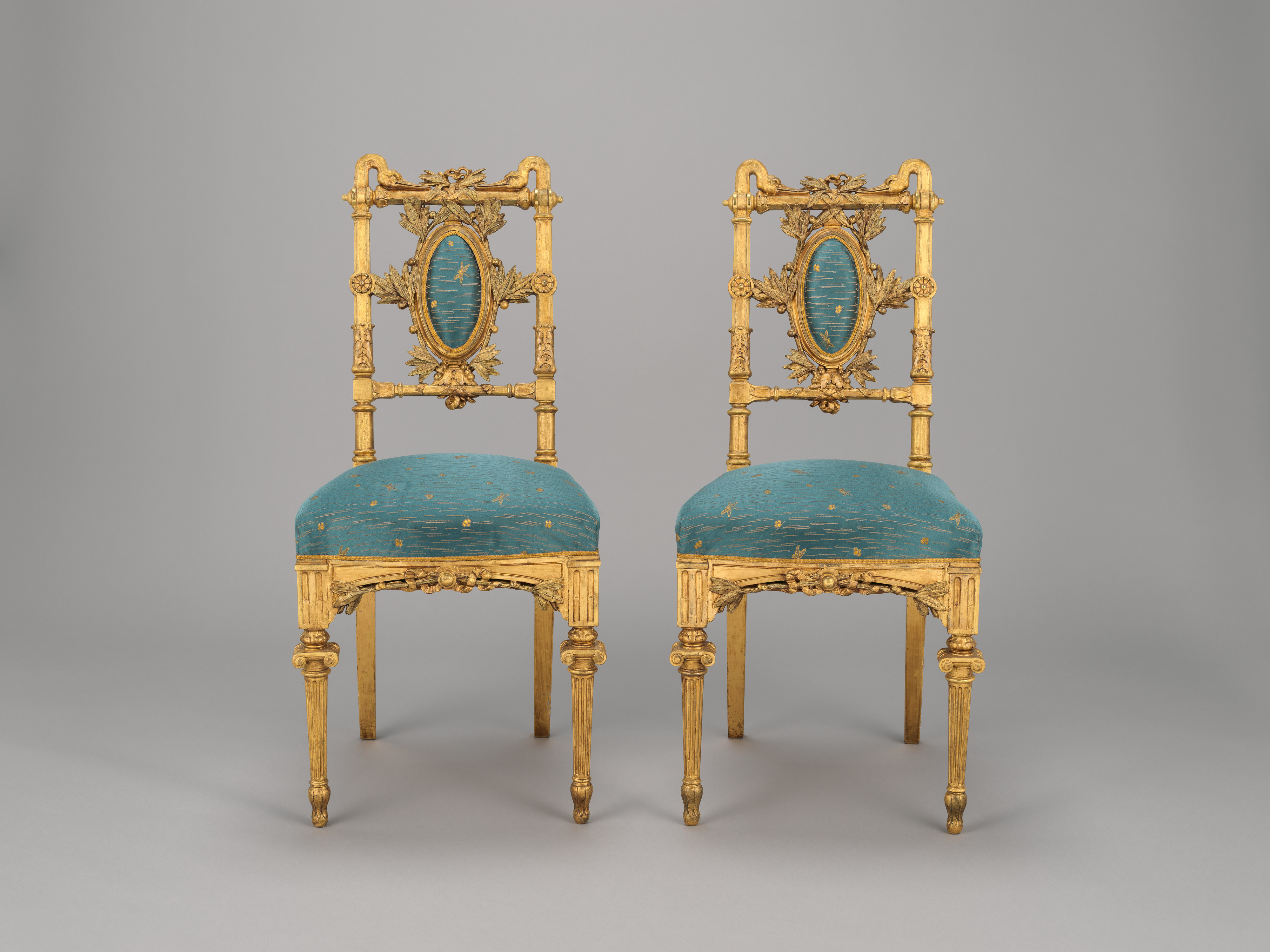Side chair
Herter Brothers American
William H. Vanderbilt, son of Cornelius “Commodore” Vanderbilt, inherited a vast fortune and a lucrative transport business, which he expanded exponentially, becoming one of the wealthiest men in America. In 1879, to mark his elevated social and economic status, he built a mansion that spanned an entire city block on Fifth Avenue, between Fifty-First and Fifty-Second Streets. He commissioned Herter Brothers, one of the premier cabinetmaking firms in New York City, to decorate and furnish his home. In devising distinct decorative schemes for each room of the mansion, Herter Brothers drew inspiration from a wide range of historical styles and utilized expensive, exotic materials.
Originally fashioned by Herter Brothers for Vanderbilt’s previous residence, this side chair, one of a pair, was incorporated in the boudoir of his new mansion on Fifth Avenue. While Vanderbilt desired to construct a completely new and modern residence, the boudoir was part of the family’s apartments not used for formal entertaining and thus offered the opportunity to reuse furnishings. Hallmarks of Herter’s earlier style include the turned legs and ionic capitals, the overall form of the back, and the graceful swans’ necks and heads at the crest rails. For the new room, Christian Herter reupholstered the chairs in a custom fabric, manufactured in France, of his own design— a Japanesque pattern with lines of gold thread to suggest water, interspersed with small dragonflies, tiny waterlily blossoms, and leaves.
Due to rights restrictions, this image cannot be enlarged, viewed at full screen, or downloaded.
This artwork is meant to be viewed from right to left. Scroll left to view more.






